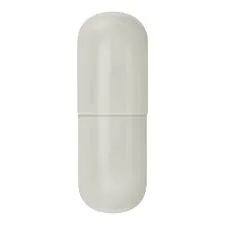
Dec . 19, 2024 16:15 Back to list
celulosa hpmc
Understanding Cellulose and Hydroxypropyl Methylcellulose (HPMC)
Cellulose is one of the most abundant organic polymers on Earth and serves as an essential structural component of the cell walls in plants. It is a polysaccharide composed of glucose units linked by β-1,4-glycosidic bonds, creating long chains that provide rigidity and strength to plant structures. This natural polymer has a variety of applications in numerous industries, including food, pharmaceuticals, and materials science.
An important derivative of cellulose is Hydroxypropyl Methylcellulose (HPMC). This cellulose ether is produced through the chemical modification of cellulose, wherein hydroxypropyl and methyl groups are introduced into the cellulose chain. The introduction of these groups alters the properties of cellulose, making HPMC a versatile compound.
Understanding Cellulose and Hydroxypropyl Methylcellulose (HPMC)
In the pharmaceutical industry, HPMC is an essential excipient, primarily used in tablet formulations. It functions as a binder, film-forming agent, and controlled-release agent, enhancing the bioavailability of active pharmaceutical ingredients. HPMC’s properties allow for modified drug release profiles, making it suitable for both immediate and sustained-release formulations. This controlled release can lead to improved therapeutic outcomes and enhanced patient compliance.
celulosa hpmc

Moreover, HPMC is utilized in the production of hydrophilic matrices for drug delivery systems. These matrices swell in the presence of water, creating a gel-like barrier that regulates the release of the drug over an extended period. This feature is particularly beneficial for chronic conditions requiring long-term medication.
Another field where HPMC is gaining traction is construction. It is used as an additive in cement-based products, improving workability and water retention. HPMC's inclusion in mortar and tile adhesives also enhances their performance, providing better adhesion and flexibility.
The cosmetic and personal care industry also leverages HPMC for its thickening and stabilizing properties. It is commonly found in products like lotions, shampoos, and hair gels, where it helps achieve the desired texture and consistency.
Despite its many advantages, the environmental impact of HPMC production must be considered. While cellulose is renewable, the chemical processes involved in creating cellulose derivatives like HPMC can raise concerns about sustainability and waste. Researchers are continually exploring greener synthesis methods and alternatives to reduce the ecological footprint associated with HPMC production.
In conclusion, cellulose and its derivative Hydroxypropyl Methylcellulose represent significant advancements in various industries. From food products to pharmaceuticals and construction materials, HPMC has proven to be an invaluable resource, owing to its multifunctional characteristics. As we continue to innovate and refine production methods, the potential applications for cellulose derivatives will only expand, influencing both industry practices and everyday consumer experiences. Understanding the properties and uses of HPMC not only highlights the importance of cellulose but also emphasizes the need for sustainable practices in its production and utilization.
-
Versatile Hpmc Uses in Different Industries
NewsJun.19,2025
-
Redispersible Powder's Role in Enhancing Durability of Construction Products
NewsJun.19,2025
-
Hydroxyethyl Cellulose Applications Driving Green Industrial Processes
NewsJun.19,2025
-
Exploring Different Redispersible Polymer Powder
NewsJun.19,2025
-
Choosing the Right Mortar Bonding Agent
NewsJun.19,2025
-
Applications and Significance of China Hpmc in Modern Industries
NewsJun.19,2025







